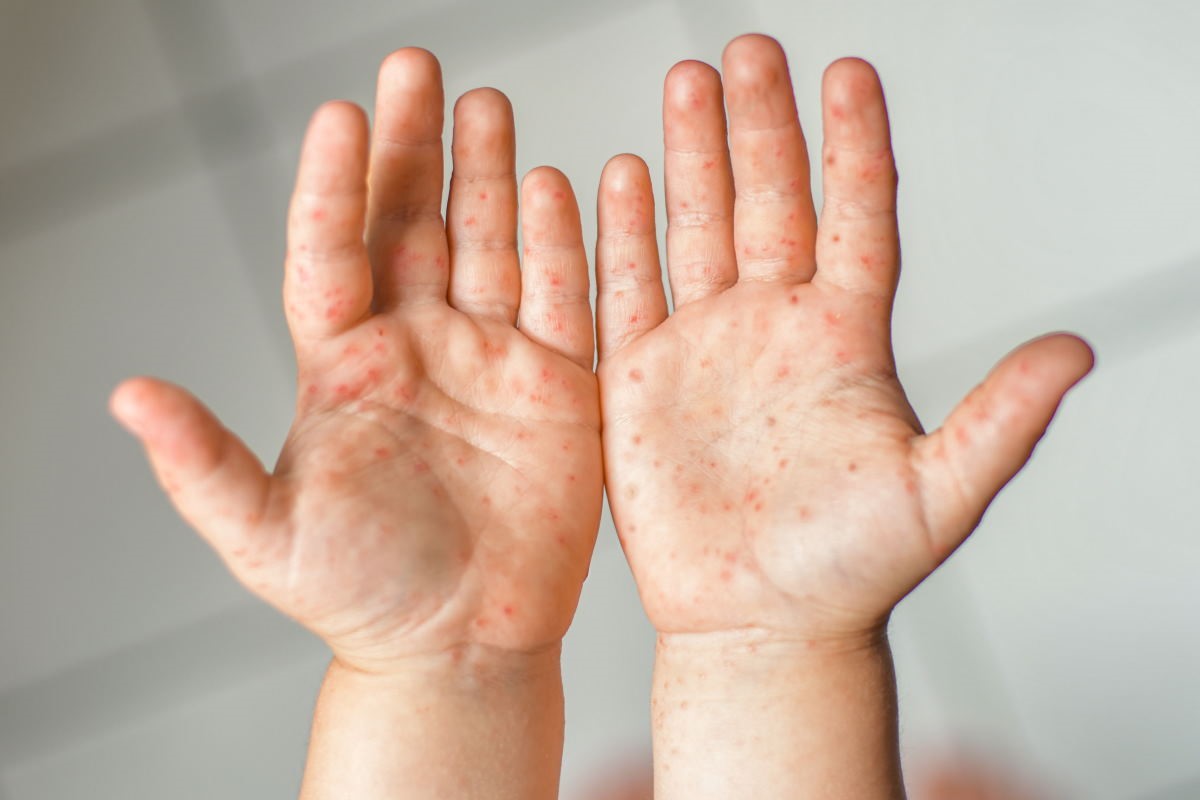
What is 'hand foot and mouth' disease and how to recognise it
Very common among children, “hand,foot and mouth” syndrome is a disease caused by an easily transmissible virus
How hand foot and mouth disease is transmitted
The viruses responsible for hand-foot-and-mouth syndrome belong to the Enterovirus family, viruses that spread very quickly via saliva.
Schools and kindergartens are the ideal breeding ground for this disease: all it takes is for droplets of saliva to pass from mouth to mouth, from a sneeze, a cough or a simple kiss, and that’s it.
Once the disease is contracted, the child remains contagious for 7 days, but will continue to eliminate the virus via faeces for more than a month or so.
Symptoms of hand foot and mouth syndrome
In most cases, this syndrome lasts about 10 days and produces rather mild effects that rarely result in real complications.
The first symptoms appear after 1 week, the average incubation period.
The child may experience
- generalised malaise
- sore throat;
- mouth discomfort.
Fever is not always detectable and, even when present, does not usually last longer than 24 hours.
In the days that follow, the most obvious manifestation of this disease appears: the exanthema, a series of red spots localised in particular on the hands, feet and mouth (although the buttocks and genitals cannot be excluded) that change their appearance from day to day until they become small blisters that cause pain and burning.
How hand foot and mouth disease is treated
Since it is a viral syndrome, there are no effective drugs.
Certainly, the child’s intake of cool food and drink can soothe the burning caused by the blisters.
In the case of persistent pain, especially in the early course of the illness, paracetamol is recommended as a painkiller.
Are adults at risk of infection?
Even older people, only if in contact with an infected child, can get infected.
In some cases they experience the symptoms described above, in others the course of the disease may be completely asymptomatic.
Read Also:
Emergency Live Even More…Live: Download The New Free App Of Your Newspaper For IOS And Android
Croup In Children: Meaning, Causes, Symptoms, Treatment, Mortality
How Are Picornavirus Infections Contracted?
Croup (Laryngotracheitis), The Acute Obstruction Of A Child’s Airways
A. Resistant Bacteria: The Important Discovery Of Australia
Bacterial Infections, Herpetic Whitlow: What Is It And When Do I Need To See A Specialist?
Croup And Epiglottitis: A Guide To The Management Of Respiratory Infection


